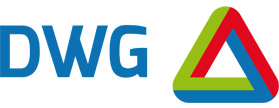When you think of Rotterdam, you automatically think of the Erasmus Bridge. But in the shadows cast by this iconic bridge, there are a further 55 bascule and lift bridges that are managed and maintained by the Municipality of Rotterdam. That’s a significant number.
The municipality’s burning desire is to operate all these bridges via one centralised system, both from a central control room and from the bridge operator’s station. This will guarantee correct and safe operation of the bridges. We accepted this challenge without any doubts about our capabilities!
Efficient cooperation with the customer
On behalf of the municipality of Rotterdam, we developed a standard software library for all the bridges in Rotterdam. We were then asked to roll out this software across 9 bridges (including the Erasmusbrug, Mathenesserbrug and Beukelsbrug) and 2 central operating stations. The software solution can be operated from both a centralised location and a bridge operator’s station. A textbook example of optimal efficiency according to Helmer Heijden at the Municipality of Rotterdam. He is responsible for managing Rotterdam’s bridges and other civil engineering structures. He comments as follows on our solution: “Adhering to the same operating philosophy meant that our bridge operators did not need additional training. They familiarised themselves with the new system very quickly. “Another advantage of the standard software library is that future maintenance and modifications can easily be carried out. That in turn saves time, lowers costs and reduces complexity!”
DWG's approach
We helped the Municipality of Rotterdam get everything working properly at a technical and process level. This work included the bridge controls and other infrastructure systems.
Siemens’ PCS7 system was our choice for achieving combined central and decentralised operation of the bridges. We built the software to operate with a local safety PLC in the bridge operator stations and one at the central control room. This arrangement also allows remote operation, via SCADA systems with server-client architecture. These systems – like the local systems – can be operated via touchscreens connected directly to the PLC.
By choosing a PCS7 system, we were able to engineer much of the PLC software and HMI based on standard components that we have developed in-house. This significantly reduced the number of errors and also shortened the development time.
Safety first
We helped the Municipality of Rotterdam get everything working properly at a technical and process level. This work included the bridge controls and other infrastructure systems.
Siemens’ PCS7 system was our choice for achieving combined central and decentralised operation of the bridges. We built the software to operate with a local safety PLC in the bridge operator stations and one at the central control room. This arrangement also allows remote operation, via SCADA systems with server-client architecture. These systems – like the local systems – can be operated via touchscreens connected directly to the PLC.
By choosing a PCS7 system, we were able to engineer much of the PLC software and HMI based on standard components that we have developed in-house. This significantly reduced the number of errors and also shortened the development time.
The result: the opposite of a ‘bridge too far’
Between December 2014 and December 2016, we developed and commissioned all the control software and operational software applications for the central control system and these 9 bridges: Erasmusbrug, Koninginnebrug, Rijnhavenbrug, Lodewijk Pincoffsbrug, Piekbrug, Binnenhavenbrug, Spoorweghavenbrug, Mathenesserbrug and Beukelsbrug. All the bridge controls were delivered on a tight schedule, ranging from 3 to 5 nights per bridge.
Interested in a meeting? We'll be happy to oblige!
Are you looking for software or hardware specialists? Or a consultant who takes the time to help you get to the bottom of your issues? We would love to hear your story! Simply contact us for a productive meeting over coffee.



